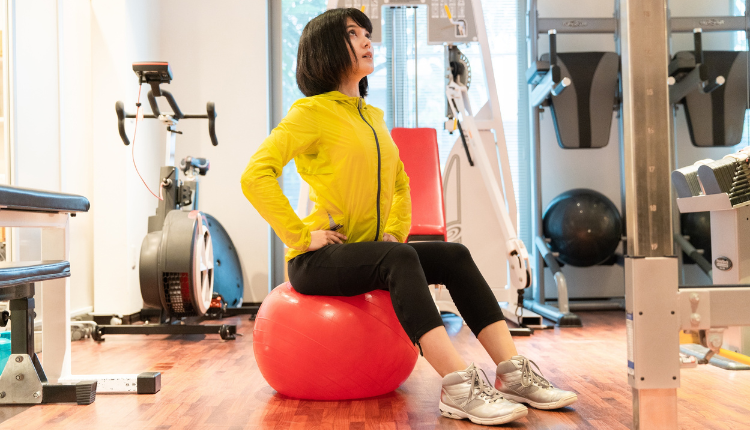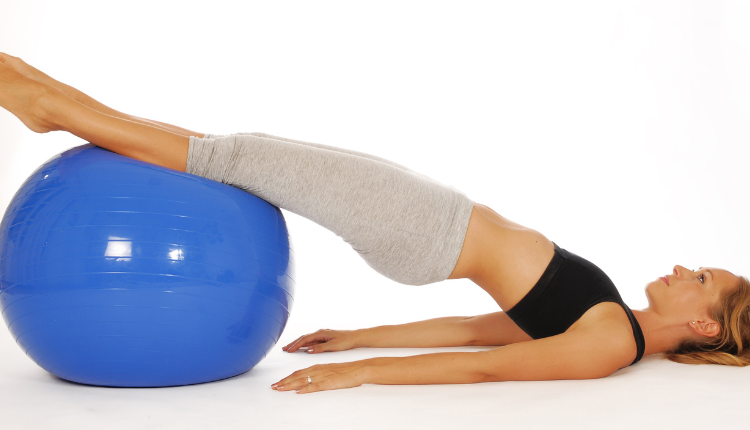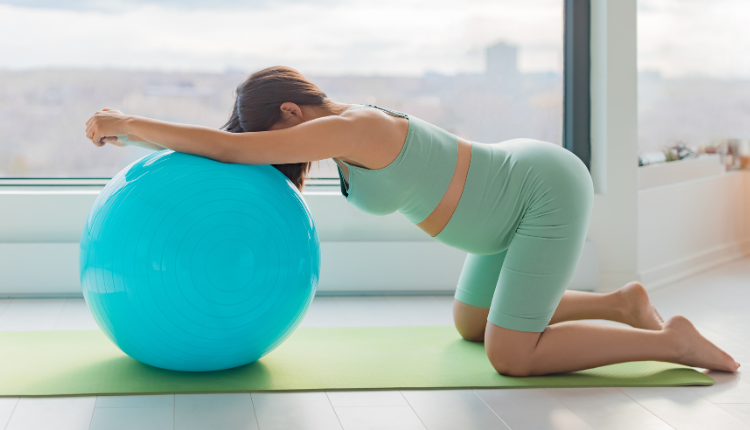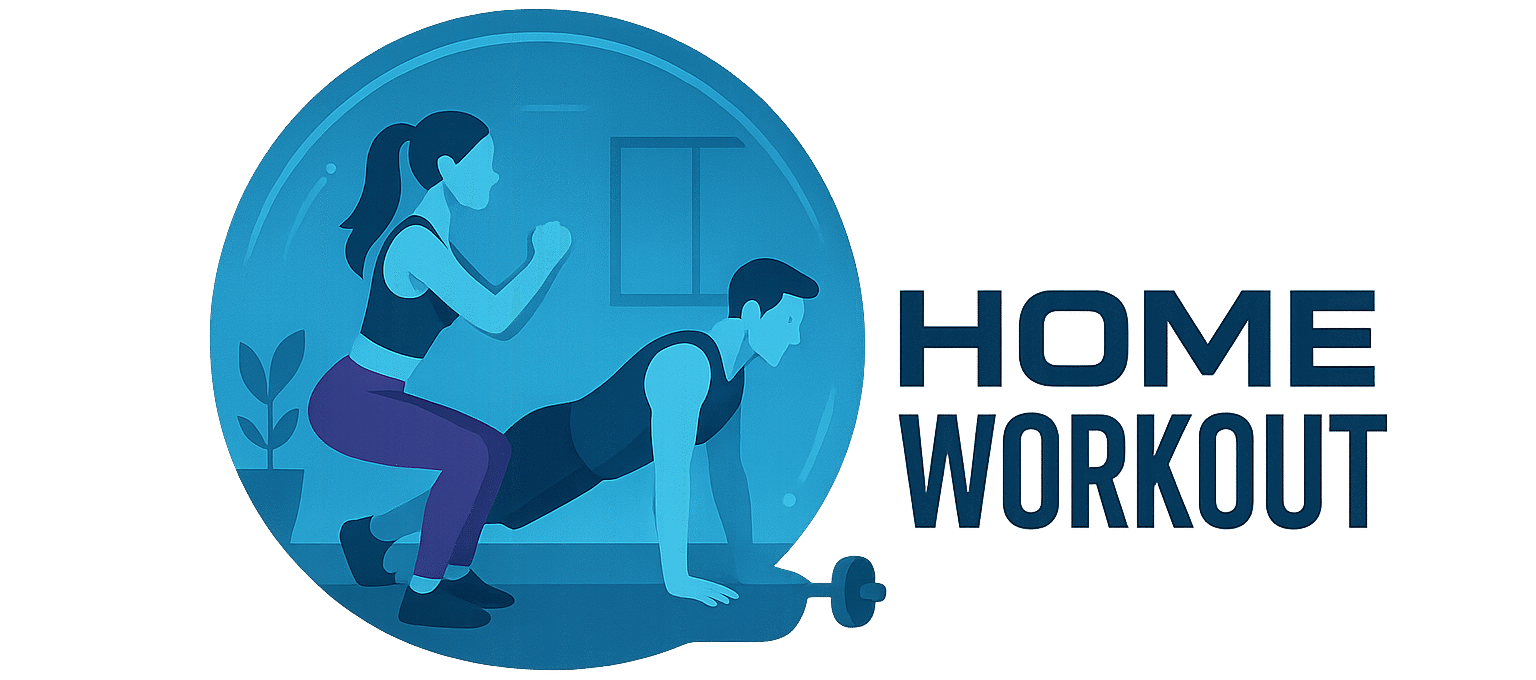Stability Ball Exercises For Beginners: Build Core Strength and Improve Balance

“This post contains affiliate links. As an Amazon Associate, I earn from qualifying purchases. If you click and make a purchase, I may earn a small commission at no extra cost to you”.
Just starting your at home workout routine? Not sure which equipment to consider in getting you started? For many individuals starting this journey, just like you, the stability ball has become a popular product. For good reason! In this article, we will take an in-depth look at this product and introduce you to a number of stability ball exercises for beginners. Let’s get started:
What makes these stability balls so popular is the both the convenience and the results they provide. These large, inflatable balls are ideal for individuals residing in tight living spaces, but are now starting out on their fitness routine. Below you will find a number of stability ball exercises for beginners that help to improve core strength, enhance balance, and develop better posture—all without complicated equipment or advanced fitness knowledge.
When you sit or exercise on a stability ball, your body constantly makes small adjustments to maintain balance. These micro-movements engage deep stabilizing muscles that often go unused in traditional workouts. The result? A stronger foundation for all your movements, both in exercise and everyday activities.
Benefits of Stability Ball Workouts for Beginners
Before we dive into the various exercises outlined below, let’s take a closer look at some of the benefits these stability balls provide. Not mentioned below, but certainly a benefit, is the budget-friendly cost of these balls as you start your fitness journey. Let’s take a look at just a few of these benefits:
Core Activation
Simply sitting on a stability ball engages your core muscles. These balls create an unstable surface that forces your abdominal, back, and pelvic muscles to work together to maintain balance. This constant engagement helps strengthen your core without traditional crunches or sit-ups.
Improved Balance
Balance is a skill that requires practice. The unstable surface of a stability ball challenges your proprioception (your body’s awareness of its position in space) and helps develop better balance over time. This translates to improved stability in everyday movements.
Better Posture
When sitting on a stability ball, your body naturally aligns itself to maintain balance. This encourages proper spinal alignment and helps strengthen the muscles that support good posture. Regular use can help correct posture issues that develop from prolonged sitting.

Safety Tips for First-Time Users
Safety should always be your priority when starting any new exercise program. Here are essential tips for beginners using a stability ball:
Before You Begin
- Check your ball for proper inflation. It should be firm but have a slight give when pressed.
- Ensure your exercise area has enough space (at least 3 feet in all directions) and is free of sharp objects.
- Use a non-slip exercise mat under the ball to prevent it from sliding on smooth surfaces.
- Wear comfortable clothing that allows free movement and athletic shoes with good traction.
- If you have any health concerns or medical conditions, consult with your healthcare provider before starting.
5 Essential Stability Ball Exercises for Beginners
These five fundamental exercises will help you get comfortable with the stability ball while building core strength and improving balance. Start with 1-2 sets of 8-10 repetitions for each exercise, and gradually increase as you become more confident.
1. Seated Ball Marches

Seated Ball Marches help develop core stability and balance
- Sit on the stability ball with your feet flat on the floor, hip-width apart.
- Engage your core and sit tall with a neutral spine (not slouching or arching).
- Slowly lift your right foot a few inches off the floor while maintaining balance.
- Lower your right foot and then lift your left foot.
- Continue alternating for 30-60 seconds, focusing on stability and control.
2. Ball Squats

Ball Squats strengthen the lower body while providing back support
- Place the stability ball against a wall and position your lower back against the ball.
- Walk your feet forward slightly, keeping them hip-width apart.
- Slowly bend your knees and lower into a squat position, rolling the ball down the wall.
- Stop when your thighs are parallel to the floor (or as low as comfortable).
- Push through your heels to return to the starting position.
Modification: For less intensity, don’t squat as deeply. For more challenge, hold the squat position for 3-5 seconds.
3. Glute Bridges

Glute Bridges target the posterior chain and core stability
- Lie on your back with your calves or heels on the stability ball, arms at your sides.
- Engage your core and squeeze your glutes to lift your hips off the floor.
- Raise your hips until your body forms a straight line from shoulders to heels.
- Hold for 2-3 seconds at the top, focusing on squeezing your glutes.
- Lower your hips back to the floor with control.
4. Plank Rollouts

Plank Rollout progression stages from beginner to advanced
- Start in a kneeling position with the stability ball in front of you.
- Place your forearms on the ball, keeping your core engaged and back flat.
- Slowly roll the ball forward by extending your arms, maintaining a straight line from head to knees.
- Roll out only as far as you can while keeping your core engaged and back straight.
- Slowly roll the ball back to the starting position by pulling with your arms and engaging your core.
Modification: For beginners, roll out just a small distance. As you get stronger, gradually increase the distance.
5. Seated Ball Balance

Seated Ball Balance challenges core stability and proprioception
- Engage your core and sit tall with a neutral spine.
- Sit on the stability ball with your feet flat on the floor, hip-width apart.
- Slowly lift your right foot off the floor and extend your leg straight out.
- Hold for 5-10 seconds while maintaining balance.
- Return your foot to the floor and repeat with the left leg.
Modification: If extending your leg is too challenging, simply lift your foot a few inches off the floor without straightening your leg.
15-Minute Beginner Stability Ball Routine
Now that you’re familiar with the basic exercises, let’s put them together into a simple 15-minute routine. This workout is designed to be done 2-3 times per week, with at least one day of rest between sessions.
| Exercise | Duration/Reps | Rest | Notes |
| Warm-up: Seated Ball Circles | 30 seconds each direction | No rest | Sit on ball, make small circles with hips |
| Seated Ball Marches | 45 seconds | 15 seconds | Focus on stability, not speed |
| Ball Squats | 10 repetitions | 30 seconds | Keep weight in heels |
| Glute Bridges | 10 repetitions | 30 seconds | Squeeze glutes at top |
| Plank Rollouts | 8 repetitions | 45 seconds | Roll out only as far as comfortable |
| Seated Ball Balance | 5 seconds per leg, 5 reps each | 30 seconds | Focus on core engagement |
| Ball Squats (second set) | 10 repetitions | 30 seconds | Try to go slightly deeper if possible |
| Glute Bridges (second set) | 10 repetitions | 30 seconds | Hold top position for 2 seconds |
| Cool down: Gentle stretches on ball | 2-3 minutes | No rest | Focus on deep breathing |

Frequently Asked Questions
How often should beginners use a stability ball?
For beginners, 2-3 sessions per week with at least one day of rest between workouts is ideal. This gives your muscles time to recover and adapt. As you become more comfortable, you can gradually increase frequency.
Can I use a stability ball if I have back problems?
Stability ball exercises can be beneficial for some back conditions, but it’s essential to consult with your healthcare provider first. Start with gentle exercises and focus on proper form. Exercises like supported wall squats and gentle bridges are often recommended for those with back issues.
How do I know if my stability ball is properly inflated?
A properly inflated stability ball should compress about 6 inches when you sit on it. When sitting, your knees should be at a 90-degree angle with your feet flat on the floor. If the ball compresses too much or barely gives at all, adjust the inflation level.
Can I use a stability ball instead of an office chair?
Yes, many people use stability balls as alternative seating. Start with short periods (15-20 minutes) and gradually increase as your core strength improves.
